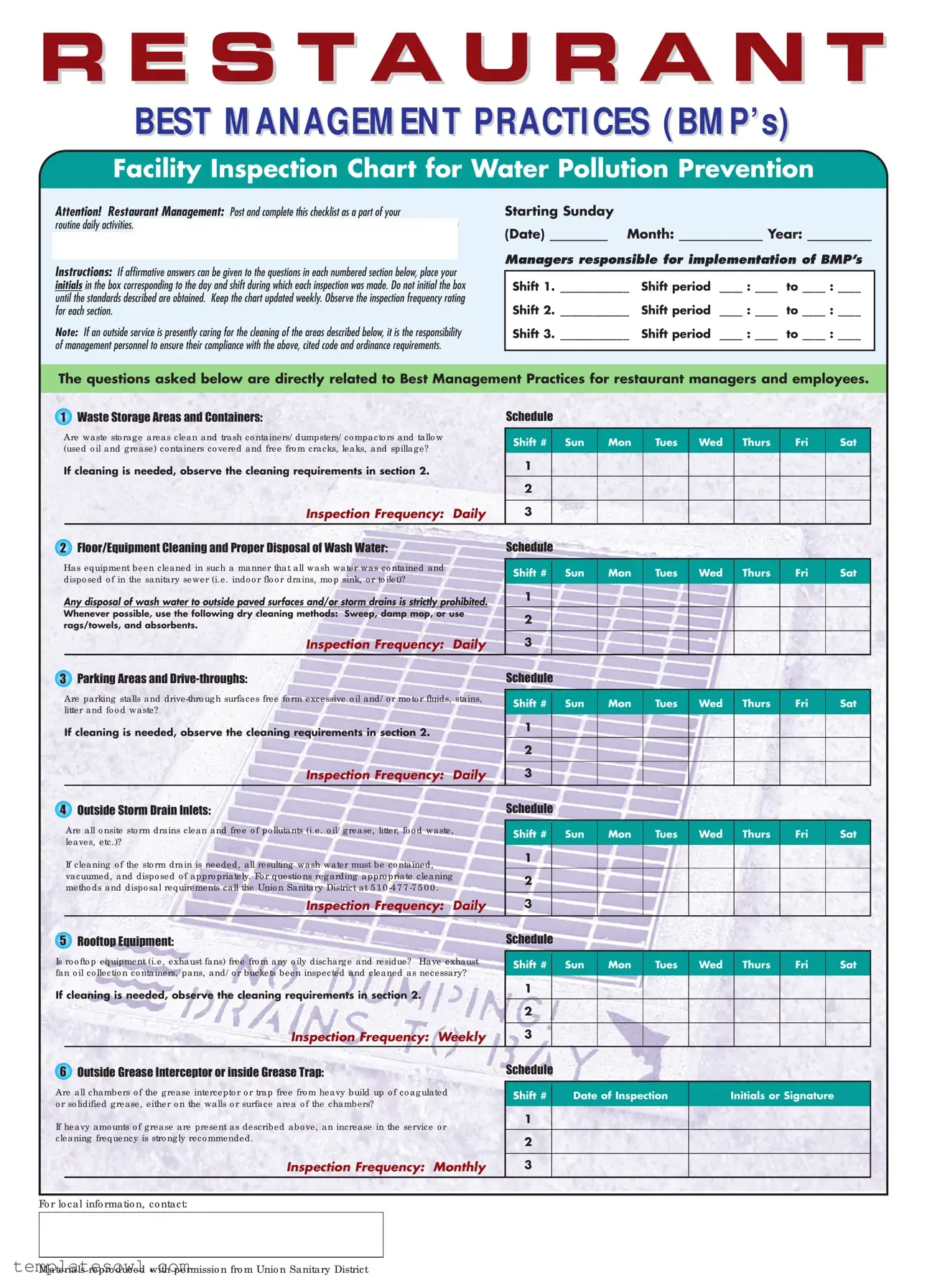What is the purpose of the Restaurant Cleaning Inspection Checklist?
The Restaurant Cleaning Inspection Checklist is designed to help restaurant management maintain compliance with the City of Fremont’s storm water management and discharge control regulations. It serves as a daily routine tool for ensuring that cleaning practices meet the required standards, thereby preventing water pollution and protecting the municipal drainage system.
How should the inspection process be conducted?
Managers should complete the checklist during their scheduled shifts. Each section contains questions related to specific cleaning practices. For each question, if the answer is affirmative, the manager places their initials in the designated box. This process helps track inspections effectively, and it's crucial not to initial a box until the standards are met.
What does each section of the checklist address?
Each section of the checklist focuses on a different area of cleaning and maintenance. Topics include waste storage areas, floor and equipment cleaning, parking areas, storm drain management, rooftop equipment, and grease interceptors or traps. By addressing these areas, the checklist ensures comprehensive oversight of sanitation practices critical to environmental compliance.
How often should various areas be inspected according to the checklist?
Inspection frequencies vary by section. Most areas, such as waste storage, floor cleaning, and storm drains, require daily inspections. Other areas, like rooftop equipment, need weekly inspections, while grease interceptors may be inspected monthly. This schedule helps maintain consistent cleanliness and compliance.
What are the consequences of not adhering to the checklist?
Failure to comply with the cleaning standards outlined in the checklist could result in violations of the municipal code and discharge requirements. These violations may lead to fines, penalties, or increased scrutiny from regulatory agencies. It is essential for management to ensure compliance to avoid these potential consequences.

